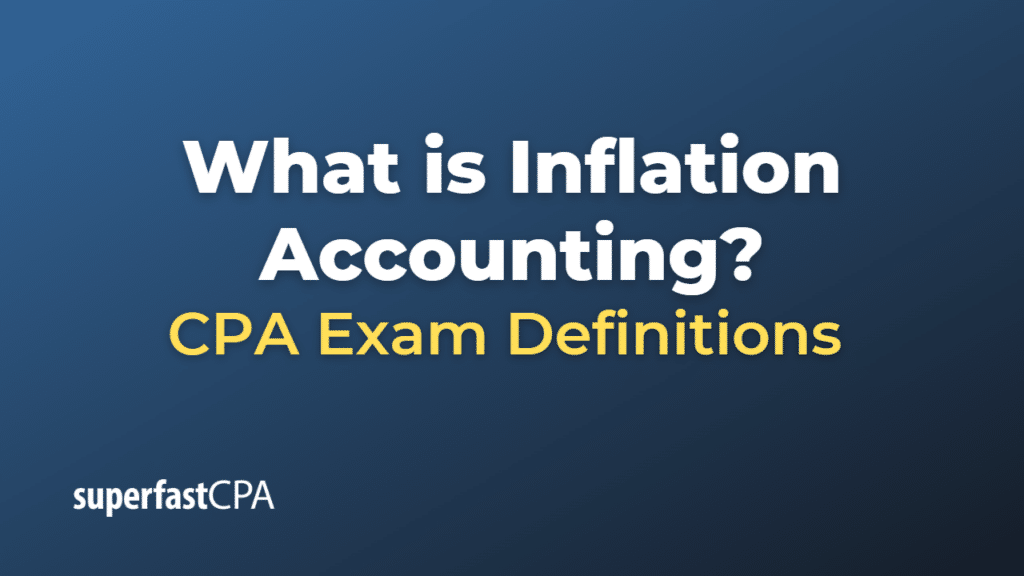Inflation Accounting
Inflation accounting is a financial reporting procedure which records the impact of inflation on the financial statements of a company. During periods of high inflation, businesses may need to adjust their financial statements to reflect changes in the purchasing power of money.
Traditional accounting practices record transactions at their historical cost. This means that assets are reported at the original cost paid to acquire them, without considering how inflation might have changed their value over time.
This approach works well in economies with low inflation. However, in high-inflation environments, it can lead to distortions. The value of assets can be understated, and profits can be overstated. This is because the cost of goods sold might be recorded at their cost from previous years, which can be much lower than their replacement cost in today’s inflated dollars.
To correct these distortions, inflation accounting uses various techniques:
- Current Cost Accounting (CCA): Assets are valued at their current replacement cost, rather than their historical cost. This shows how much it would cost to replace the asset at current prices.
- Constant Purchasing Power Accounting (CPPA): Financial statements are adjusted according to a general price index, reflecting changes in the purchasing power of money. This ensures that statements reflect the current economic reality, not historical costs.
- Capital Maintenance: This is a concept where a profit is only recognized if the financial (or physical) capital of a company at the end of the period exceeds the capital at the beginning of the period, after excluding any owners’ contributions or withdrawals.
inflation accounting can provide a more realistic view of a company’s financial health in times of high inflation. However, it’s also more complex and can lead to more subjective valuations, as it requires estimating current costs and future price levels.
Example of Inflation Accounting
Let’s consider a simple example. Suppose a company purchased a piece of machinery for $100,000 five years ago. Over those five years, the machinery has been depreciated on a straight-line basis with a 10-year useful life, so the machinery’s book value (historical cost minus accumulated depreciation) is now $50,000.
In a traditional historical cost accounting system, that $50,000 would be reported as the machinery’s value on the balance sheet.
Now, let’s say that inflation has been at an average of 7% per year over those five years, and the replacement cost of that same machinery is now around $140,000.
If the company were using current cost accounting (a form of inflation accounting), they would report the machinery at its current replacement cost of $140,000, not the historical cost minus accumulated depreciation. This provides a more accurate picture of the company’s current financial position and the potential costs it might face to maintain its productive capacity.
Or, if the company were using constant purchasing power accounting (another form of inflation accounting), they would adjust the original cost and accumulated depreciation by the inflation rate to reflect the change in general purchasing power. So, if we apply a cumulative inflation adjustment over five years at 7% per year, the adjusted cost would be approximately $140,255 and the adjusted accumulated depreciation would be approximately $70,127, resulting in an adjusted book value of about $70,128.
By using inflation accounting, the company provides a clearer picture of its financial health in real, inflation-adjusted terms, especially during periods of high inflation.













